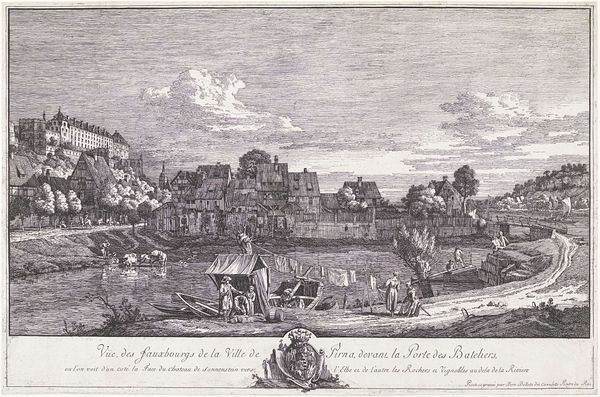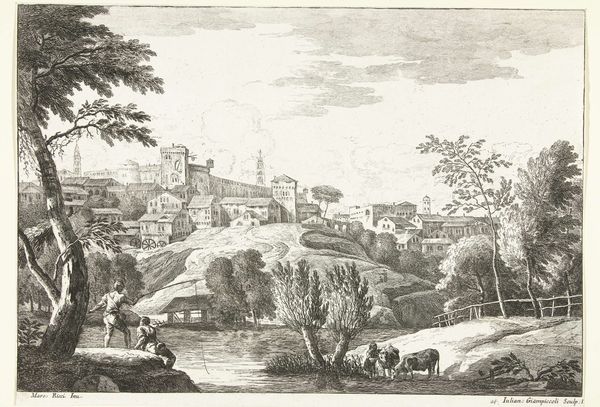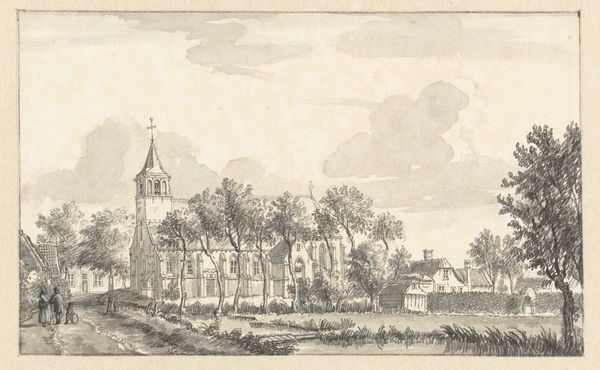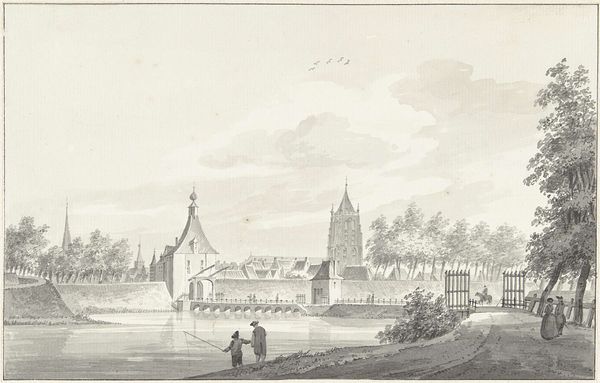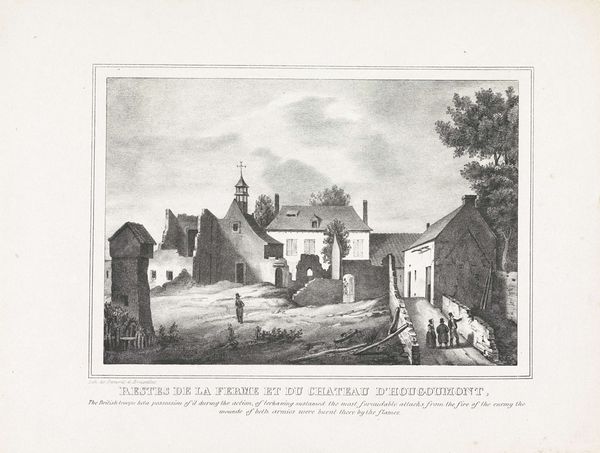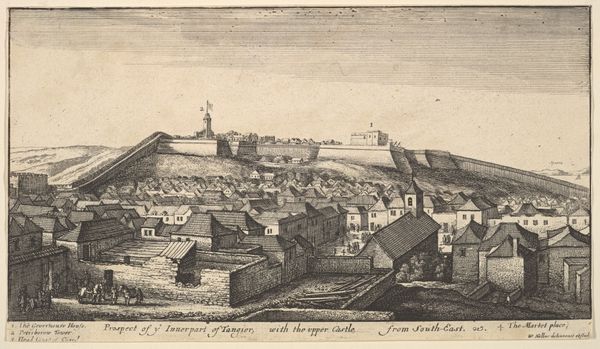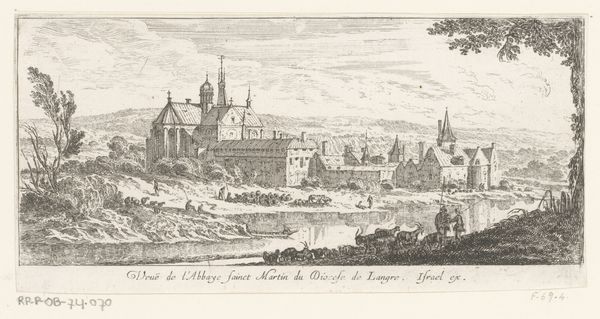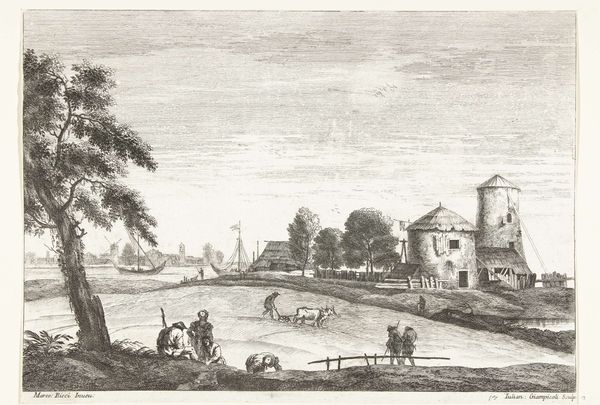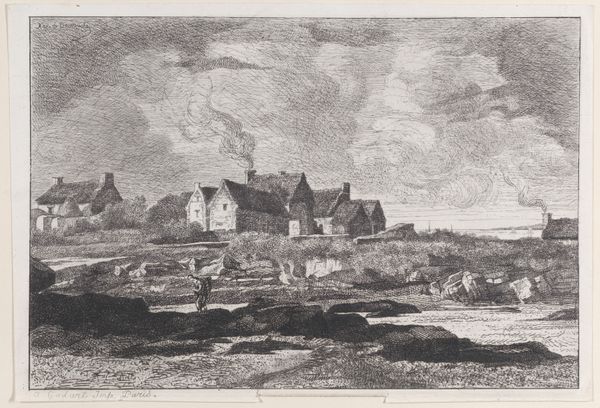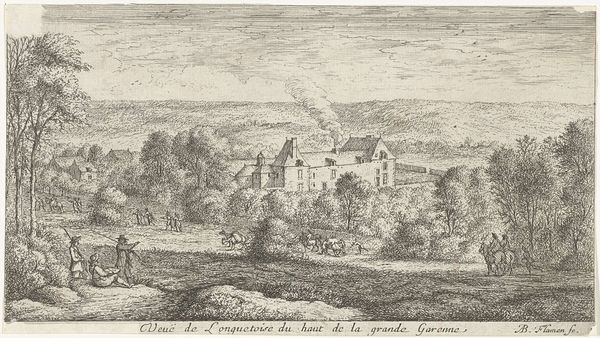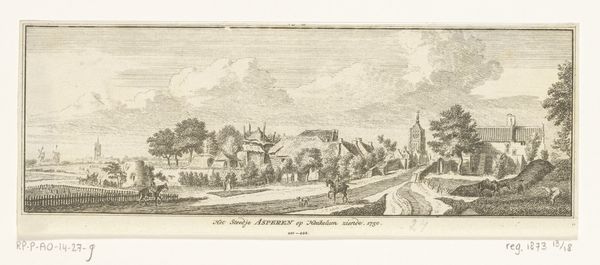
print, engraving
#
baroque
# print
#
landscape
#
cityscape
#
history-painting
#
engraving
Dimensions: height 423 mm, width 550 mm
Copyright: Rijks Museum: Open Domain
Curator: So, let’s turn our attention to a fascinating piece: “Gezicht op Schloss Sonnenstein, Pirna en de Elbe” which we can translate to “View of Sonnenstein Castle, Pirna and the Elbe”. This print was created sometime between 1730 and 1780 by Bernardo Bellotto. It's an engraving, giving us a detailed glimpse into the past. Editor: Wow, my first impression is this feels incredibly serene! Despite all the meticulous detail, there's this calm feeling about the castle overlooking the little figures and animals in the foreground. It’s like history whispering a bedtime story. Curator: I'm drawn to the printmaking process here. Think about the engraver carefully working on the plate to create this composition! Each tiny line contributes to the overall picture and to the illusion of depth. This required an immense amount of planning and precision. Considering the date, this also provides significant historical documentation about how resources and materials were moved to produce these prints. Editor: Absolutely! And notice how Bellotto plays with perspective. The high vantage point makes the castle look even more imposing. Though this isn't "real" history painting, it is absolutely recording its own social history. Plus, that little pastoral scene in the front – sheep and cattle! – adds such charm. They make it accessible, not just some austere monument. I like it. Curator: I appreciate how you pointed out the foreground. The deliberate combination of city views and agricultural details gives us insight into land use and social structure in that time period. Where were the animals being grazed, what did land management look like and, also, where does all that wealth that afforded castles come from in the first place? Editor: Exactly! It’s that quiet tension between labor and luxury, nature and the made-made environment. It also subtly shifts our focus. The print, in that way, invites all sorts of questions, not just historical or art historical, but intensely, personally relevant to viewers over time. I enjoy how it creates room for that conversation. Curator: Well, reflecting on the artwork, what remains with me is the incredibly complex processes required for it. Editor: I think I'm leaving with that overall sense of balance – and, of course, dreaming of rolling hills.
Comments
No comments
Be the first to comment and join the conversation on the ultimate creative platform.



